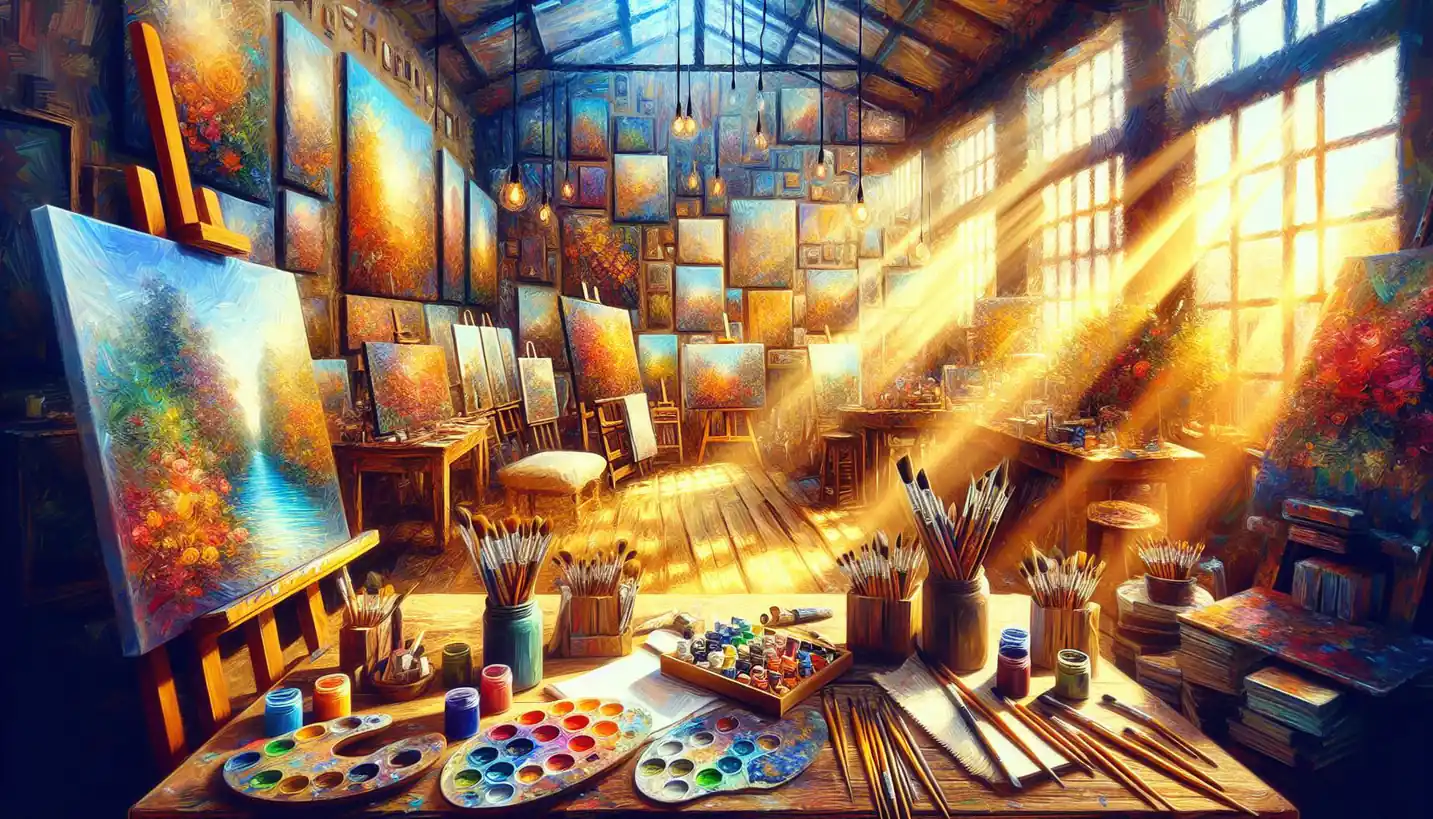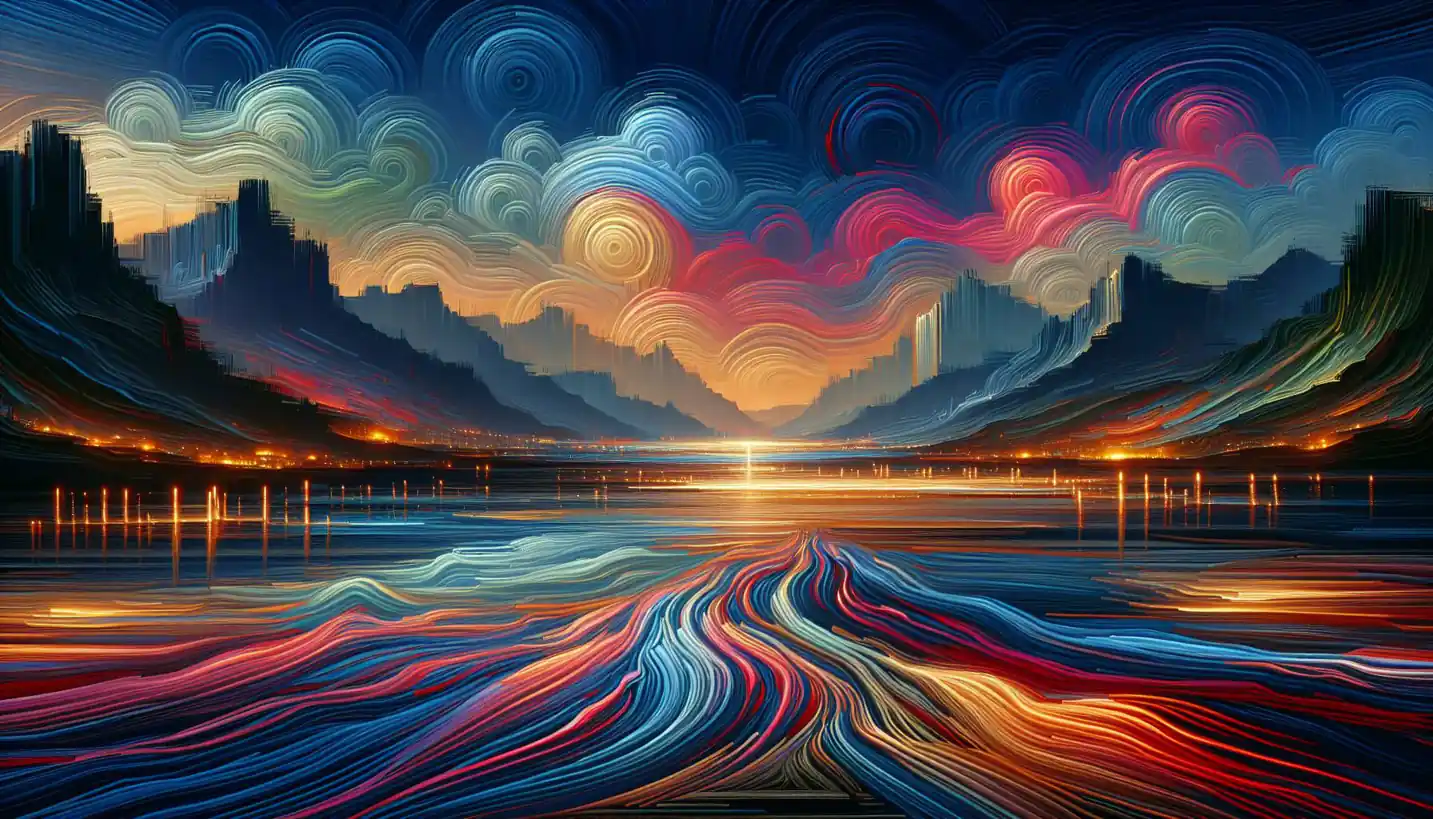· Art · 5 min read
Head-Mounted Displays: Revolutionizing Augmented Reality Art
Head-mounted displays bring augmented reality art to life with immersive perspectives. Discover how this technology revolutionizes the way we engage with art.

Augmented reality, or AR, is changing the game when it comes to experiencing and creating art. Head-mounted displays, those futuristic goggles you’ve probably seen in sci-fi movies, are a key player in this revolution. They bring virtual elements right into our physical world, and that’s making a huge splash in the art scene.
What Are Head-Mounted Displays?
Let’s start by breaking down what head-mounted displays (HMDs) actually are. Think of them as wearable gadgets, often resembling a pair of oversized sunglasses or helmets, that house tiny screens or lenses in front of your eyes. These screens project digital images that blend seamlessly with the real world, creating an AR experience. From gamers to engineers, many people are already using HMDs to transform their environments. For artists, it’s like having a new canvas that stretches beyond the physical.
The Magic of Augmented Reality in Art
Augmented reality isn’t just about overlaying digital images on the real world. It’s about interaction and immersion. Imagine walking into a museum, wearing an HMD, and watching paintings come to life. Birds fly out of the canvas, clouds move, and you can even hear the sound of a river flowing in a landscape painting. This dynamic experience engages multiple senses, transforming static art into an interactive spectacle.
How Artists Are Using HMDs
Artists around the globe are tinkering with AR to push the boundaries of creativity. Here’s a simple way to think about it: imagine an artist painting a mural, but instead of brushes and paint, they’re using software to add layers and animations to their work. With HMDs, art steps off the wall and becomes a living narrative.
Interactive Exhibitions
Picture yourself at an art exhibition where nothing is quite what it seems. Through HMDs, artworks change as you move around them, offering different scenes or stories. An ordinary-looking sculpture could transform into a dazzling, kaleidoscopic display as you walk by. These AR-enhanced exhibits become a personal journey, with every step revealing something new.
Street Art and Public Installations
Street artists are having a field day with AR. Traditional graffiti can turn into a 3D spectacle visible only through an HMD. Imagine a city where murals shift and change, responding to the weather or time of day. By integrating HMDs, street art becomes more than just visual expression—it becomes an evolving dialogue with the environment.
The Technology Behind HMDs
So, how do these headsets work their magic? At the core, HMDs have sensors that track your head movement, helping the device know where you’re looking. This tracking enables the device to anchor digital images to specific locations in your field of view. The displays are often equipped with stereoscopic lenses, creating a sense of depth and making the virtual elements feel real.
One popular example is Microsoft’s HoloLens, which uses advanced optics and sensors to overlay digital content onto the real world seamlessly. It’s a heady mix of technology that feels like wearing a high-tech pair of reading glasses, allowing you to peek into another dimension.
Challenges and Considerations in AR Art
Creating art with HMDs isn’t without its hurdles. First up, the cost. High-quality AR devices can be pricey, which might be a barrier for some artists. Then there’s the learning curve. Artists must get comfortable with new technologies and software, which can be daunting.
Another interesting challenge is ensuring that the digital elements synchronize perfectly with the physical world. A digital butterfly should appear to land exactly on a real flower, not float awkwardly above it. This requires precise calibration and often involves trial and error.
The Future of HMDs in Art
The prospects are thrilling. As HMD technology becomes more advanced and accessible, we can expect more artists to experiment with AR. Enhanced processing power, better battery life, and more comfortable designs will open up even more creative possibilities.
Moreover, collaborations between artists and technologists will continue to expand what’s possible. By blending artistry with advanced technology, we’re unlocking new ways for people to experience and appreciate art.
Why This Matters
So, why should we pay attention to this fusion of AR art and technology? For starters, it democratizes art, making it interactive and accessible to a broader audience. HMDs can transform everyday locations into art galleries, inviting people to engage with art in the spaces they inhabit daily.
Additionally, this tech-powered art form is pushing traditional boundaries, challenging what art can be and how it can be consumed. It invites viewers to become participants, engaging in a two-way conversation with the art rather than simply observing it.
Sparking Curiosity
All of this sparks fascinating questions. What does this mean for the future of traditional art forms? How will this technology continue to evolve and shape our cultural landscape? These are exciting times for artists and innovators, and the journey seems only to be beginning.
AR art with HMDs is just one example of how technology is reshaping our world. It’s an invitation to explore the limitless possibilities of combining the virtual with the tangible, and to marvel at how artists are dreaming up new realities. The intersection of science and art is rich with potential, challenging us to rethink our perceptions and interactions with the world around us.
By embracing this evolution, we open ourselves up to a new realm where creativity knows no bounds, and where the canvas extends far beyond the edges of what we once thought possible. Whether you’re a tech enthusiast, an art lover, or just someone curious about the future, AR art via head-mounted displays invites you to see the world through a new lens—quite literally.


